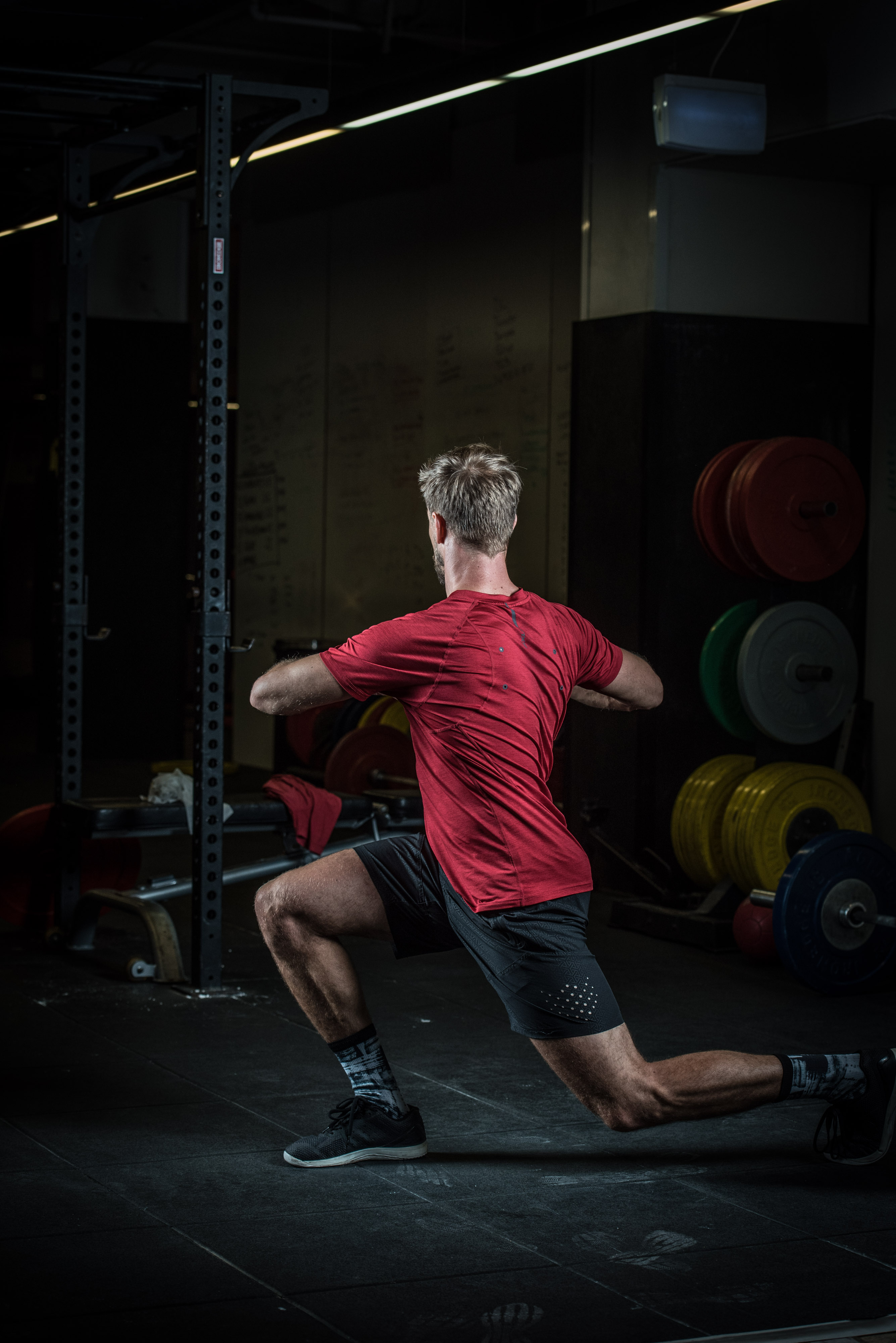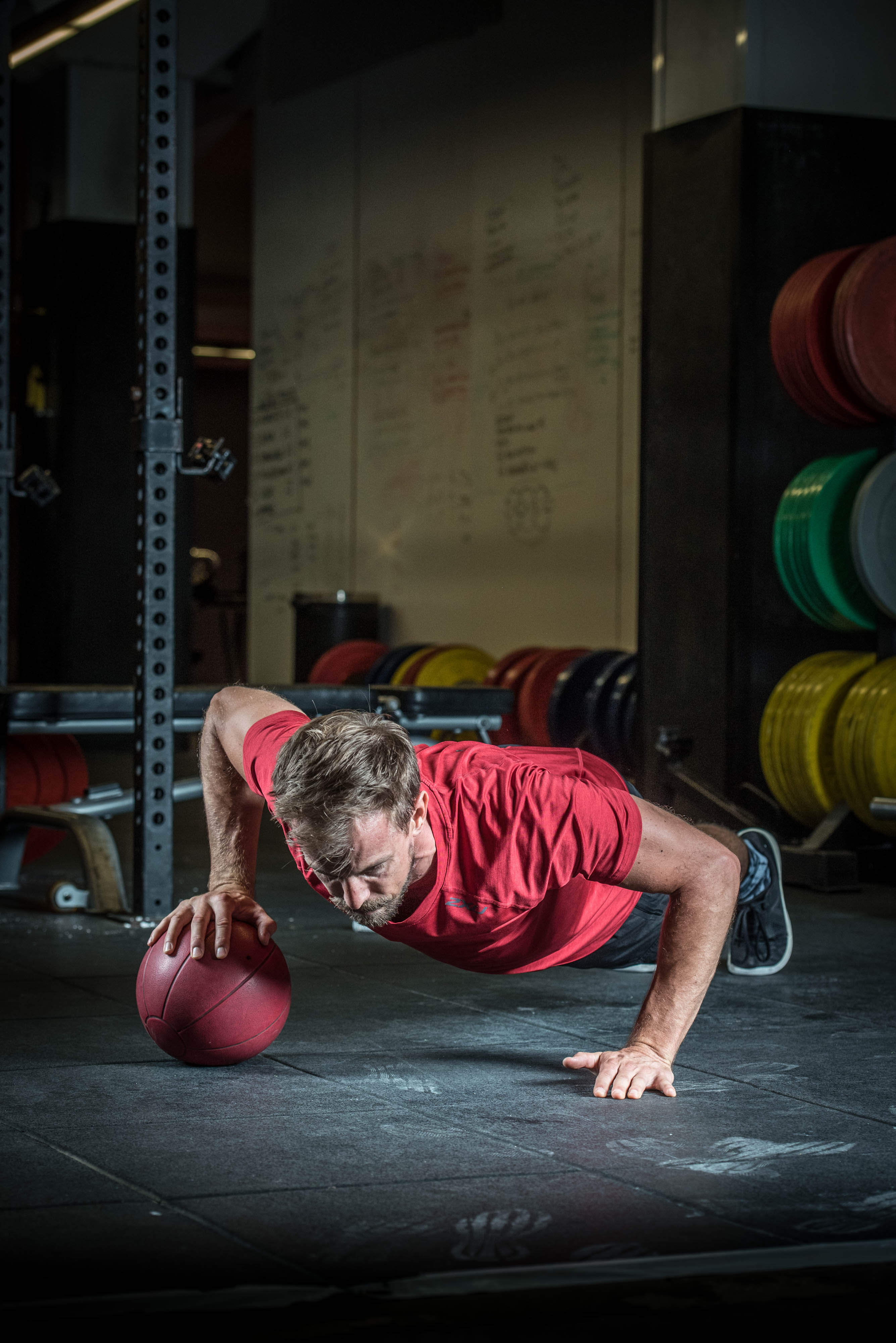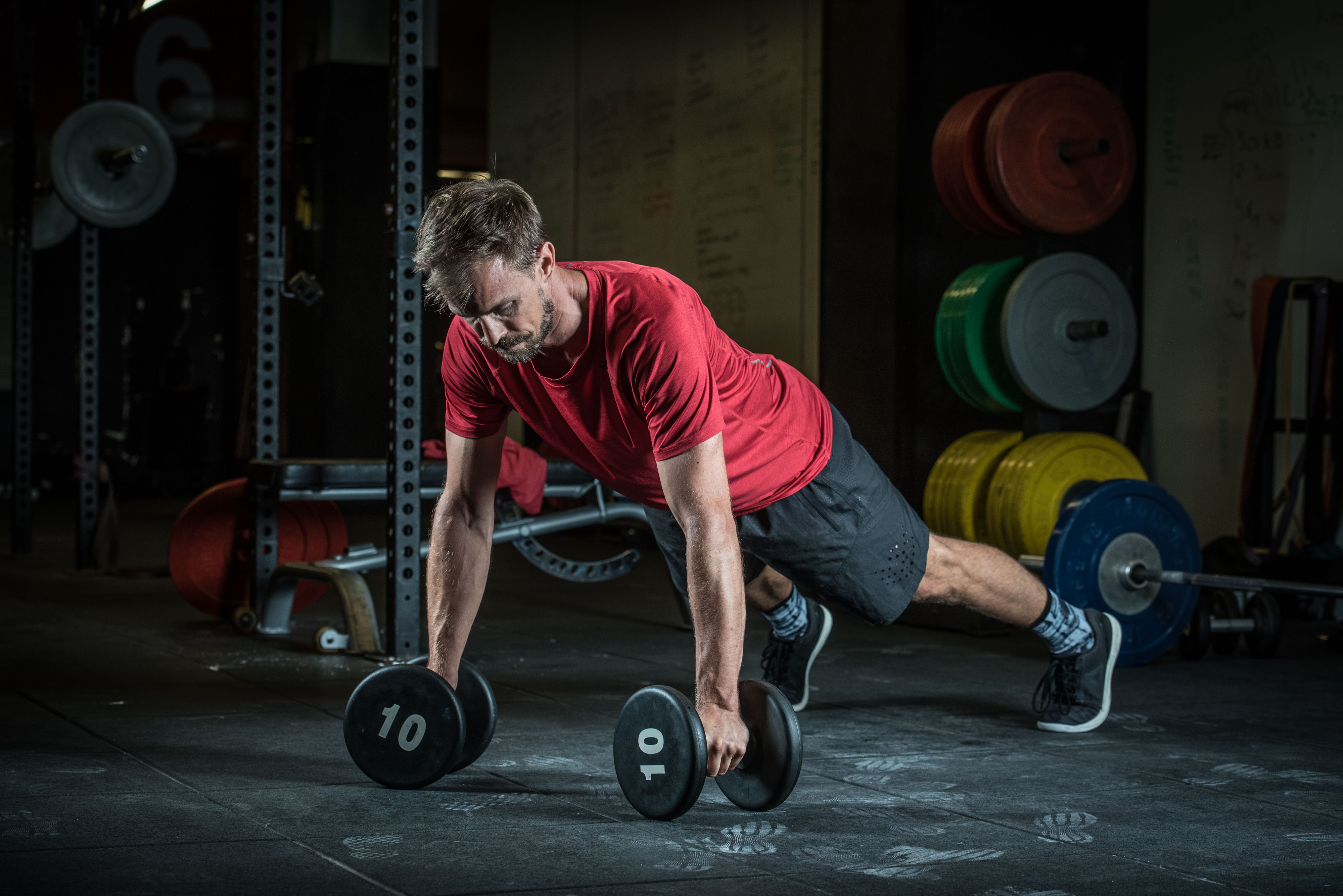With more pro mountain bikers posting their workouts on social media, you probably have noticed many aren’t just sharing riding sessions but also their strength training. Riders like Nino Schurter, Kate Courtney and Remy Metailler regularly post Instagram stories and highly polished YouTube videos about pumping iron. But do us average Janes and Joes need this type of strength training? Isn’t just hitting the trails or knocking out a few Zwift sessions enough?
Even for weekend warriors, spending a bit of time in the gym or throwing a kettlebell around in your garage will not only help you get stronger on the bike but also stay injury-free.
Other benefits from strength training are increasing our bone density (which tends to be lower for cyclists), improving joint health, correcting imbalances and poor posture, weight loss, and preventing muscle loss from ageing.
Kate Courtney spends a lot of time doing strength work and has even gone as far as converting her garage into a high-performance gym.
To get the most out of time in the gym, it’s going to take a bit of hard work and a targeted program taking into account your goals, needs and limitations; these can range from knowledge, skills and equipment to past injuries, flexibility and more.
As the days are getting shorter and colder, there has never been a better time to hit the gym. We have teamed up with Mathias Witt from Orbis Coaching who has put together a quick five exercise circuit that doesn’t require much, if any, equipment.
These exercises target muscle groups used on the bike and work to develop strength in areas where you may be a bit weaker — like your hamstrings — for injury prevention, addressing imbalances and promoting good posture.
Related
- 8 Upgrades to make your XC bike more capable, more comfortable & more fun
- 9 Tuning Tips to get the most out of your Specialized Turbo e-MTB
- 9 tips to give your kids more confidence on the trails
Contact Mathias Witt at www.orbiscoaching.com
Strength Training for Mountain Biking
Walking Lunges with twist


To develop individual leg strength, lunges are my go-to exercise. Walking lunges challenge all muscles used in cycling, and adding the twist takes your body out of that ever forward-facing position. The twist also helps better activate the glutes, which tend to be under-active for most people.
How to perform a walking lunge with a twist?
Walk forward, bending the front and back knee to 90-degrees almost touching the ground, but keeping the front shin vertical. Turn towards the same side as the front leg (right foot forward means turn right), turning your head together with your shoulders.
You can add weight in all sorts of ways; just make sure you can maintain good form with a straight back and not lose balance. Try to aim for 30 steps, to begin with.
Ball pushup


Another simple but effective exercise, this time to develop upper body strength. Adding a ball under one hand creates a less stable position to push from, much like when you are rumbling down a rough descent, get thrown out of balance, and need to get yourself back into attack position.
How to perform a Ball Pushup?
Simply alternate the ball under one hand and then the other while doing a pushup. Any other contraption to create an asymmetrical position helps too. Ensure you are holding a straight back, and your hips don’t drop (pull your abs tight!). To make it easier, have your hands elevated against a table and progressively make it harder, starting at 10 reps.
Deadlifts (and single-leg variation)


Probably my favourite exercise for raw strength and an excellent option to develop strong hamstrings to counter those strong quads you (hopefully) already have.
How to perform a deadlift?
The key is maintaining good form, a straight back, hips behind the heels, lats (side of your torso and back) engaged and lifting from the hips until locking out (squeeze your butt!). If you feel that your back is in any way doing part of the lifting, review your technique until all you can feel is your hamstrings and glutes.
I also love the single-leg variation with lighter weights to develop individual leg strength, balance and increased glute engagement.
Renegade row or TRX row


To get a strong and healthy upper back, this is a key exercise for my athletes. All that pulling on the handlebars to bunnyhop, jump or just get over that big rock needs strong pulling muscles. Also, a strong upper back will counter the hunched over position we spend too much time in (riding, sitting, driving, etc.) and promotes good posture.
How to perform a plank based renegade row?
You can either do the plank based renegade row, pulling one weight up to your shoulder, or using a TRX trainer pulling your bodyweight up.
For either variation, you must maintain a straight body, keeping the hips aligned with shoulders, knees and ankles, but also pull your shoulders back, squeezing your shoulder blades backwards (think of puffing your chest out).
Side plank drops (with reach)


This exercise will strengthen your core and shoulders. Whether it be leaning into a corner or out of the saddle sprinting, your core is the foundation on which your limbs are pushing against for stability, and is constantly being called into action as you ride. A strong core will improve your efficiency, speed and control.
How to perform a side plank?
On your elbow, with the shoulder stacked vertically, put both feet on top of each other. Drop your hip to touch the floor and come back up to the side plank. If this is easy, add a twist and reach towards the ceiling for an even greater stability challenge and core engagement.
Try to progress towards the harder options, increasing the weight or reps (or both) as you see fit. For more advanced exercises, find a good trainer and program, and always prioritise good form and technique over speed or higher weights.
Complete 3-4 rounds of the above exercises, give this a try for 4 weeks, aiming for 2 sessions a week like the above and let us know how you go!

Mathias Witt is a qualified Personal Trainer as well as a strength and nutrition coach. A former elite athlete and lifelong sports fanatic he is passionate about sharing his knowledge and expertise to create better performing and goal-orientated athletes.
In his past life, Mathias was part of the Chilean National MTB team as well as a Karate black belt and running enthusiast. He is an MBA qualified engineer who decided to change paths and share his unique approach towards sports performance and overall wellbeing by becoming a fitness and health coach.
Mathias lives and works in Sydney’s Northern Beaches, CBD and offers remote training as well as online programs. You can get in touch with him on www.orbiscoaching.com and mathias@orbiscoaching.com or follow him on Instagram @coach_orbis.